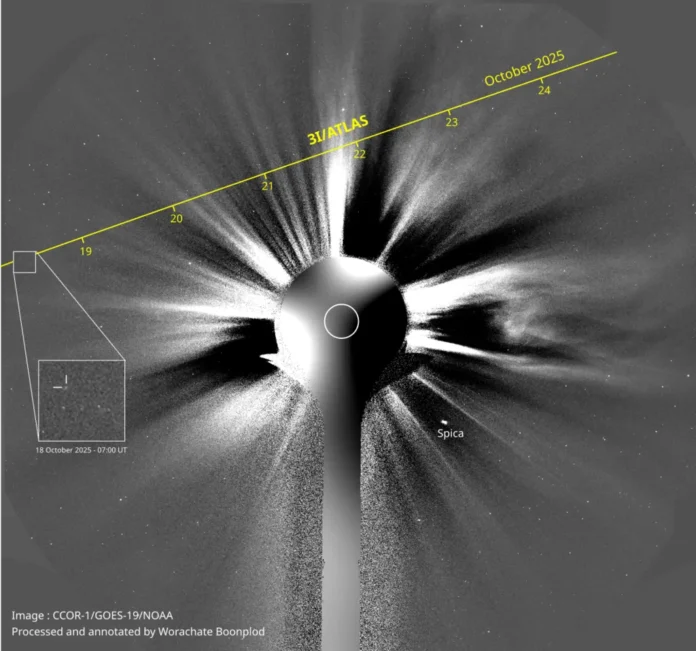
By Samuel Lopez | USA Herald
The countdown to December 19, 2025, has begun—a date that could forever redefine humanity’s understanding of its place in the cosmos. That’s when interstellar object 3I/ATLAS will make its closest approach to Earth, offering scientists their clearest opportunity yet to determine whether this mysterious traveler is a natural comet or an artifact of intelligent design.
For months, data gathered from NASA’s Jet Propulsion Laboratory and the European Space Agency have confounded experts. 3I/ATLAS has exhibited confirmed non-gravitational acceleration—an anomaly suggesting that forces other than gravity are acting upon it.
Harvard astrophysicist Avi Loeb reports that the object experienced two distinct acceleration components near the Sun: one radial, pushing outward, and another transverse, shifting laterally across its path. Neither can be fully explained by standard cometary physics.
If these accelerations are caused by natural outgassing, as some scientists propose, 3I/ATLAS should lose roughly ten percent of its total mass during this phase, releasing a vast and visible gas plume detectable by space and ground-based telescopes alike. But if no such plume appears during next month’s monitoring window, the natural explanation collapses—and the implications become extraordinary.


